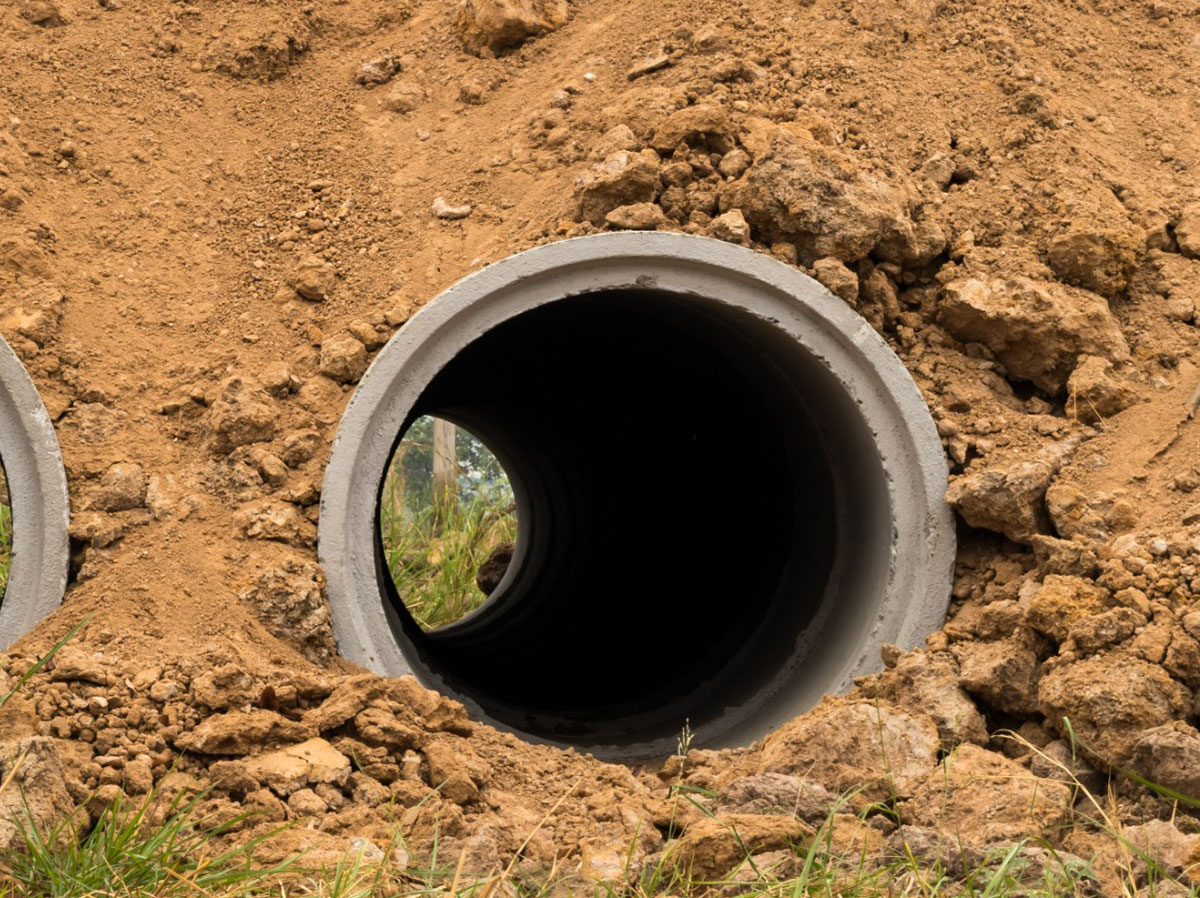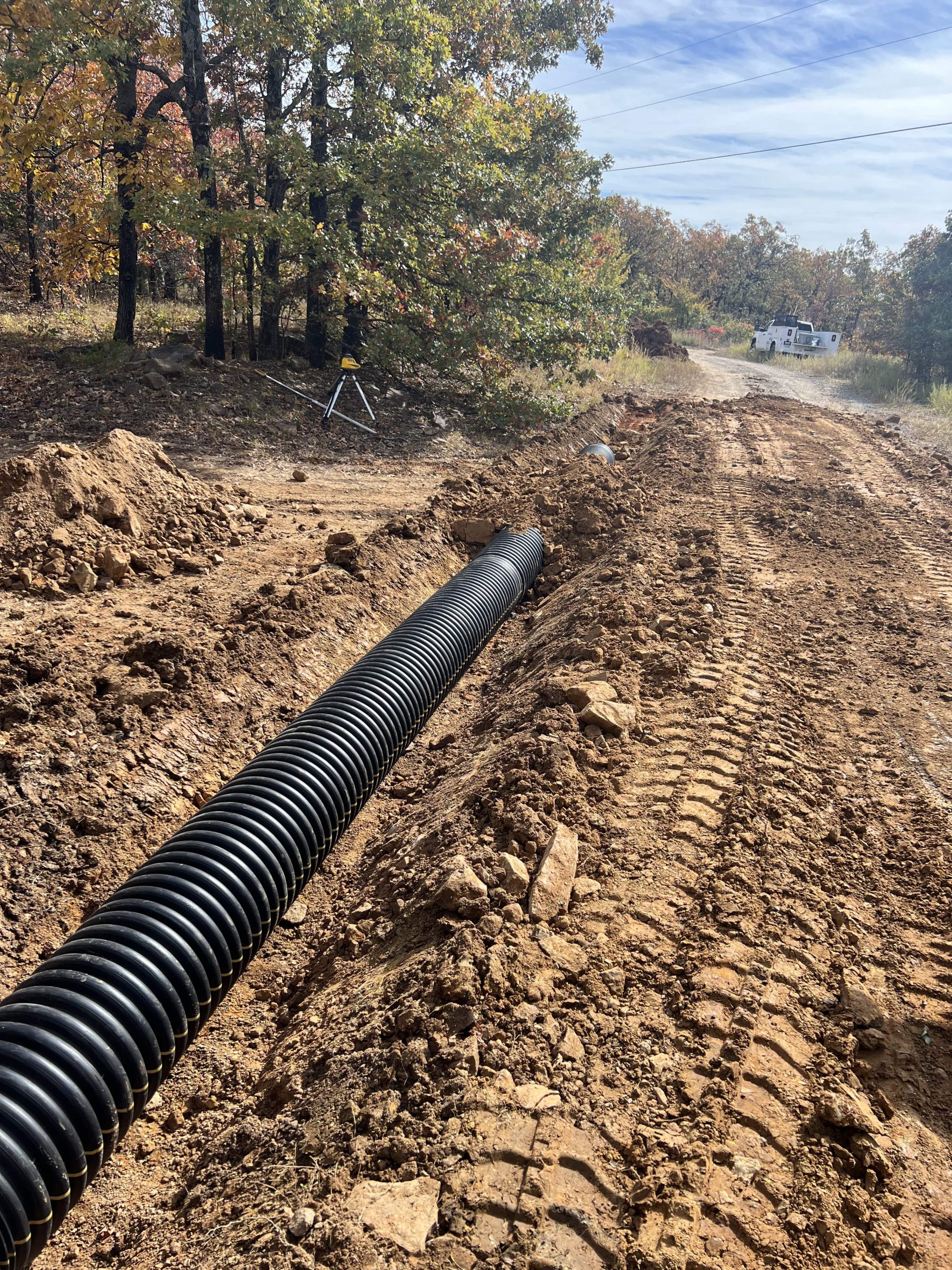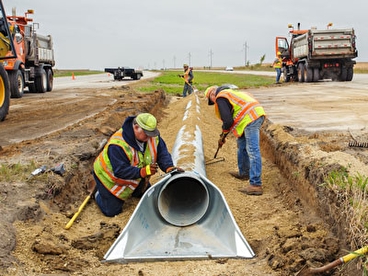Specialist Road Construction Providers for Smooth Traveling
Specialist Road Construction Providers for Smooth Traveling
Blog Article
Attain Success With Culvert Setup: Ideal Practices Revealed
Setting up culverts is a crucial facet of facilities development, calling for precision and adherence to ideal practices for long-term success. Whether carrying out a new project or maintaining existing culverts, the procedure needs meticulous focus to information. From the preliminary product choice to the final stages of upkeep, each step plays a crucial role in the functionality and durability of the culvert system. In this discussion, we will check out vital methods, tips, and standards that can substantially impact the end result of culvert installments. Understanding these key aspects is paramount in making certain the structural stability and performance of culverts, making it critical for professionals and lovers alike to comprehend these foundational principles.
Appropriate Material Selection

Concrete culverts are known for their toughness and longevity, making them appropriate for rush hour locations and large water flow quantities. Corrugated steel culverts are lightweight and simple to install, optimal for short-term applications or scenarios calling for a quick remedy. Plastic culverts are light-weight, corrosion-resistant, and affordable, making them a preferred selection for different culvert installations. Compound materials use a combination of residential properties from different materials, supplying a personalized option for certain task needs. Eventually, choosing the proper material is necessary to ensure the culvert system works effectively and has a lengthy life span.
Site Prep Work Tips
Effective site preparation is important for the successful installment of culverts, ensuring appropriate combination with the surrounding atmosphere and long-lasting functionality. Prior to beginning the installment process, it is essential to carry out a complete site evaluation to determine the suitable dimension, type, and positioning of the culvert. Clearing the area of any debris, plants, or blockages is the very first step in site prep work. This makes certain a tidy and degree surface for the culvert to be installed.
Next, the soil problems should be reviewed to analyze the stability and load-bearing ability of the ground. Relying on the dirt kind, added actions such as compaction or reinforcement may be needed to stop settling or changing of the culvert with time. Appropriate drainage factors to consider should additionally be thought about to stop water accumulation around the culvert, which can bring about erosion or architectural damage.
Lastly, establishing proper access to the website for construction tools and ensuring compliance with any regulative needs are essential elements of site preparation. By following these website prep work ideas, the installment of culverts can be accomplished efficiently and effectively, advertising the longevity and performance of the culvert system.
Installment Strategies

First of all, it is vital to properly gauge and mark the place where the culvert will be set up. This makes sure appropriate alignment and avoids any kind of mistakes throughout the installation phase. Secondly, excavation ought to be done very carefully to produce a steady structure for the culvert. The trench should be dug to the right deepness and size, taking into consideration the dimension and sort of culvert being installed.
Next, the culvert should be positioned in the trench adhering to the supplier's guidelines. Correct positioning is critical for the capability and durability of the culvert. Backfilling the trench with the ideal product and compacting it in layers is the last step in the installation process. This ensures the culvert is firmly in location and all set to stand up to the needs it will encounter. By complying with these installation methods diligently, the culvert will be successfully mounted, adding to the overall success of the job.
Maintenance Guidelines
After finishing the cautious setup of culverts complying with correct strategies, adherence to upkeep standards is critical to ensure their durability and functionality. Examinations should consist of examining for sediment build-up, disintegration around the culvert edges, and any kind of signs of deterioration or corrosion.
Additionally, preserving proper incline and alignment of the culvert is crucial for reliable water circulation and to stop prospective obstructing. Road construction. Any type of plant life near the culvert need to be taken care of to visit this page prevent origin invasion and blockages. In areas vulnerable to freezing temperature levels, executing wintertime maintenance practices such as guaranteeing appropriate drainage to stop ice accumulation is vital
Routine upkeep not just extends the life-span of culverts however additionally ensures they work successfully in managing water flow, lowering the danger of see here now damages to facilities and bordering locations.
Troubleshooting Common Issues
Addressing typical issues that may occur with culverts requires a methodical method and cautious evaluation of the underlying reasons. By evaluating the culvert alignment and incline routinely, prospective concerns can be recognized and remedied quickly.

Conclusion
To conclude, achieving success with culvert setup needs mindful consideration of product choice, thorough site prep work, correct installation methods, and regular maintenance. By complying with finest techniques and fixing common problems, the honesty and functionality of culverts can be guaranteed. It is vital to comply with guidelines and recommendations to stop any kind of possible concerns and ensure the durability of the culvert system.
Report this page